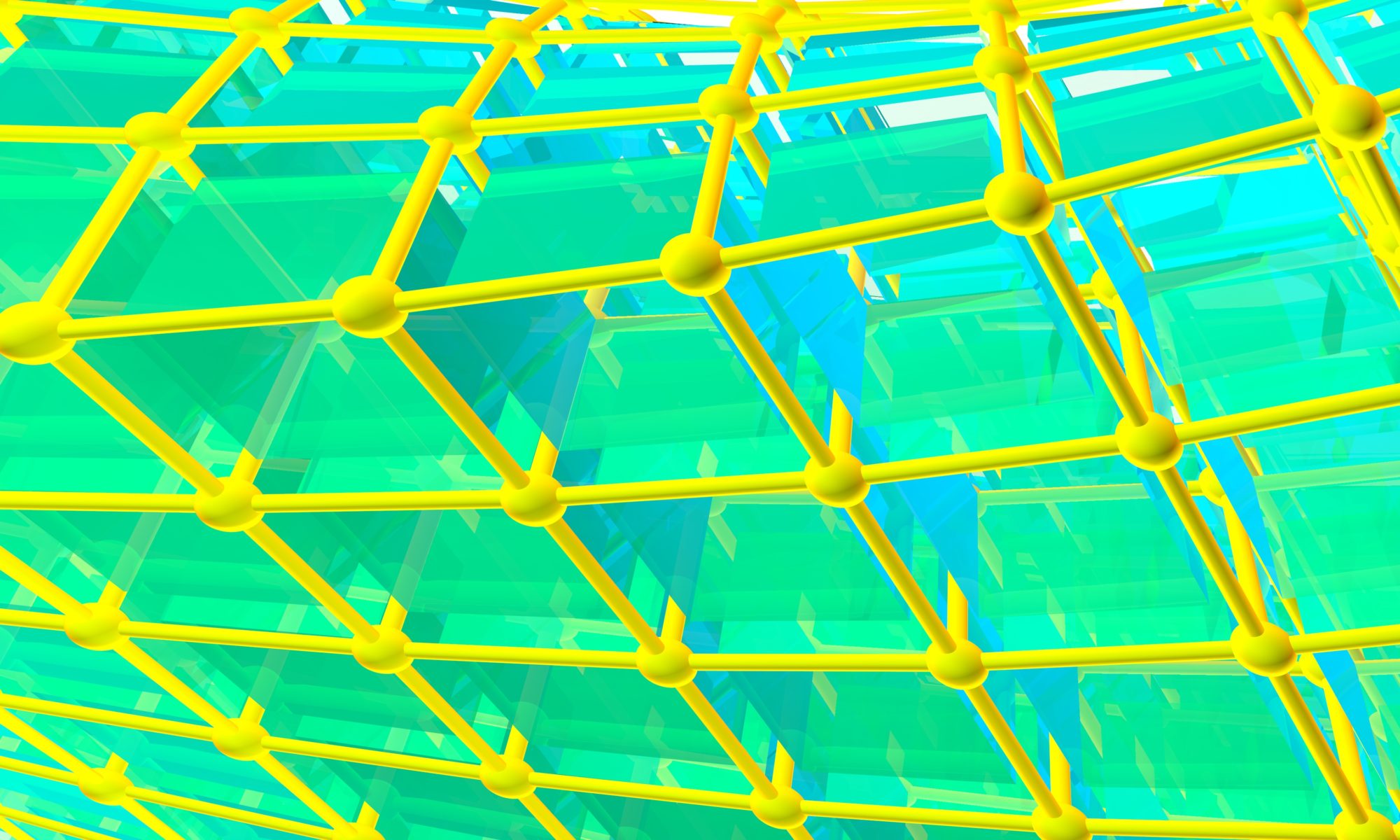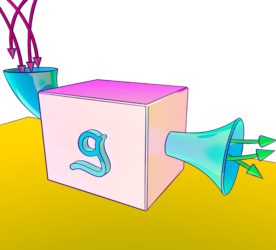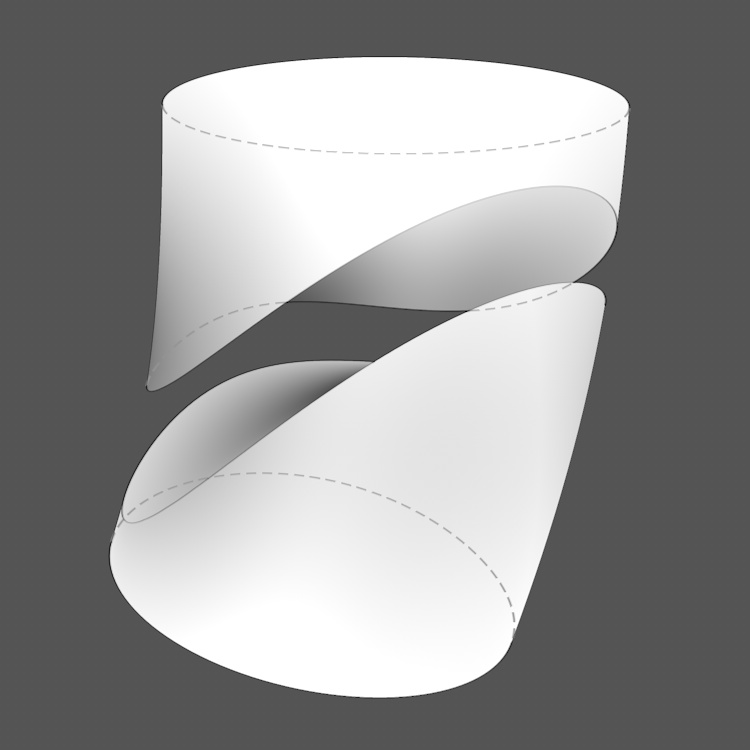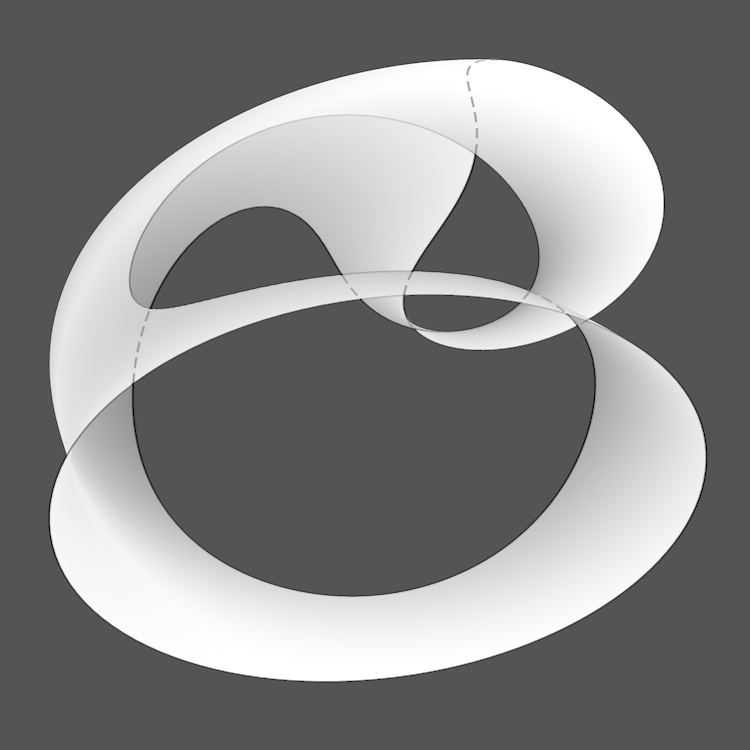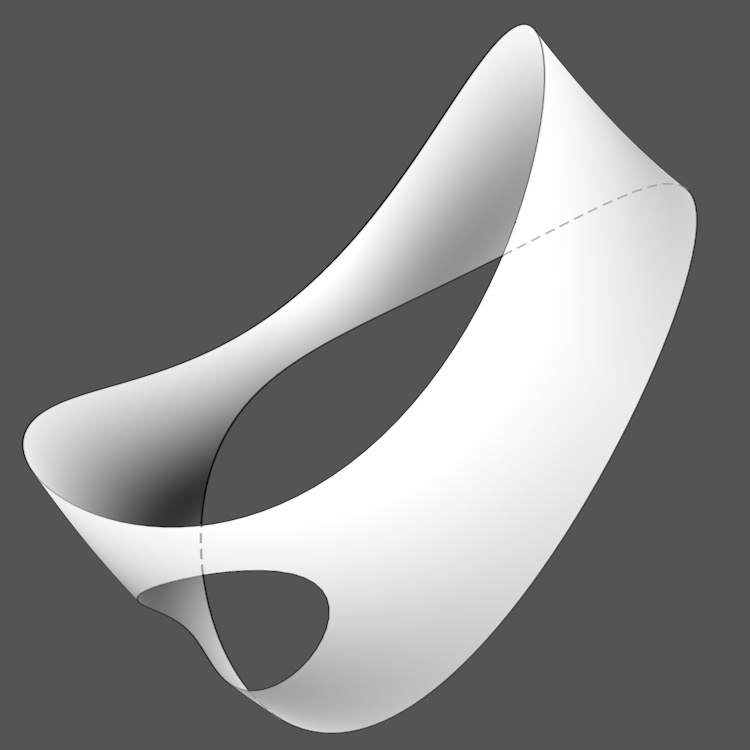is there any nice way to generate a mobius strip (from the computer graphics point of view)? i am doubtful. you won’t get it parametrically (normals are messed up; closure is a pain) and don’t try realizing it implicitly in 3-d 😉
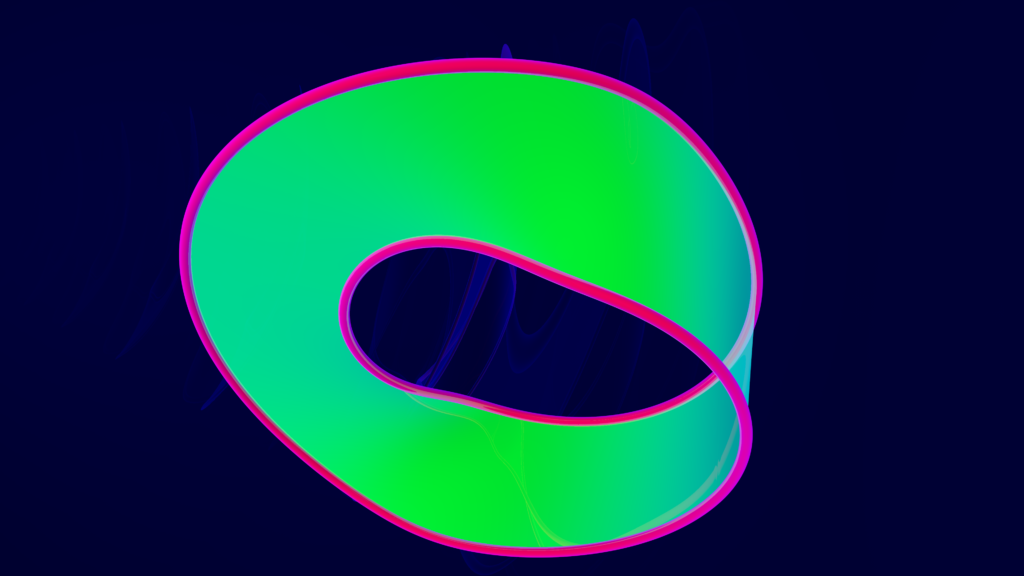
i think it helps to have a fattened boundary, as well as to have the surface partially translucent (fresnel shader) with some subtle reflectivity. this definitely looks much better when animated, but you’ll have to wait for BLUE vol 4 to hit youtube for that…
